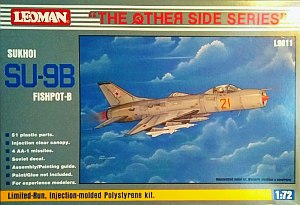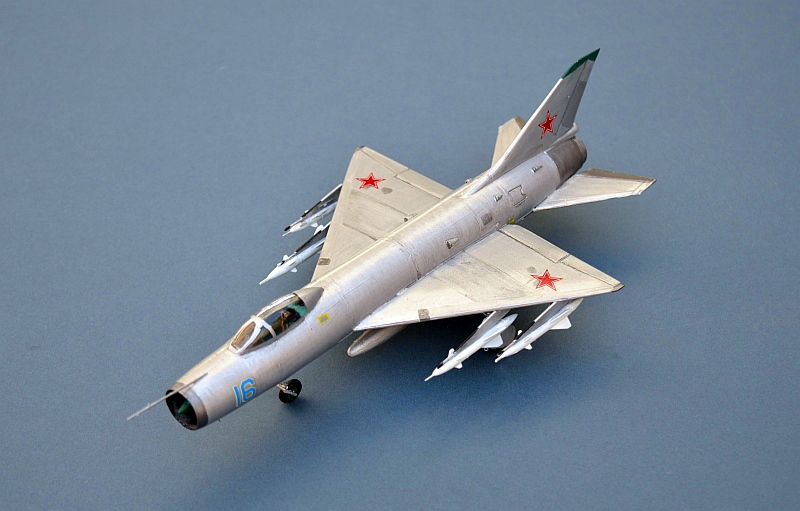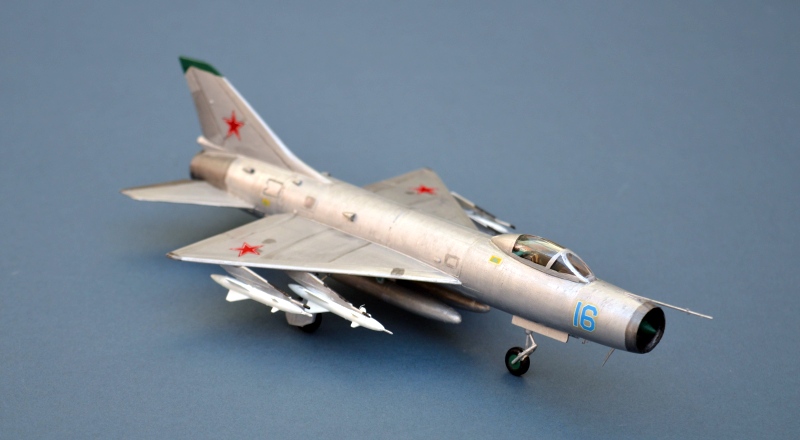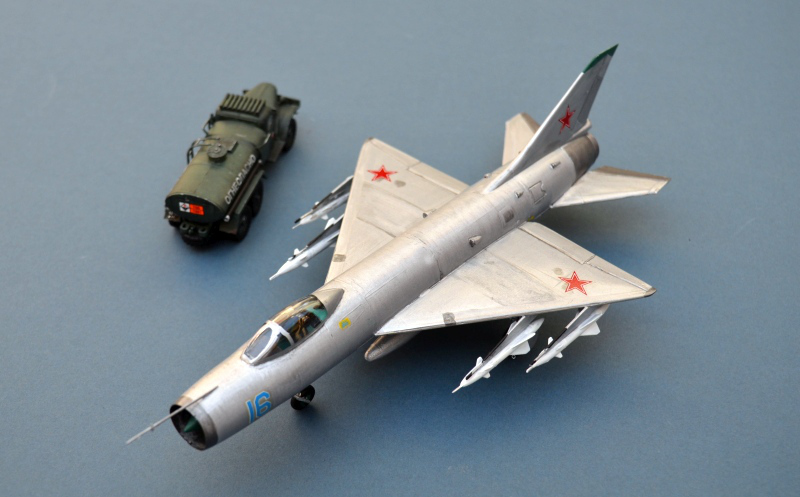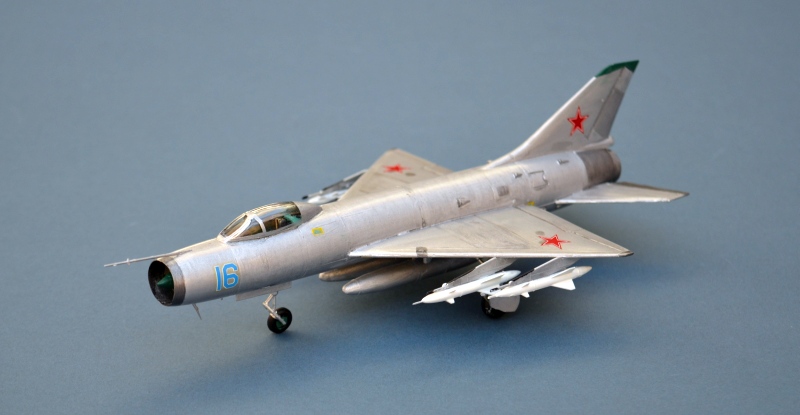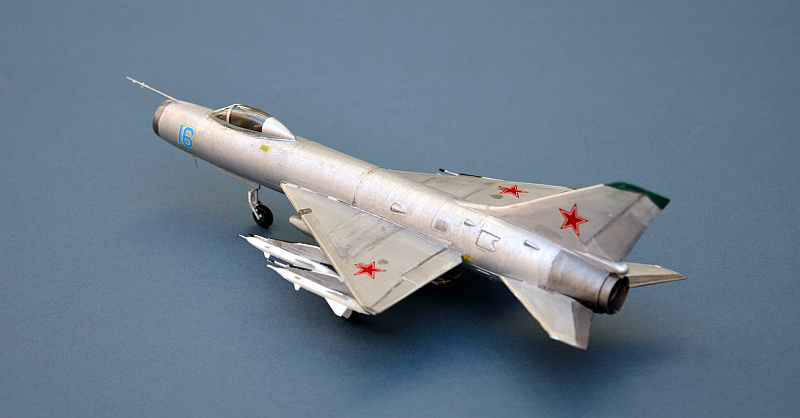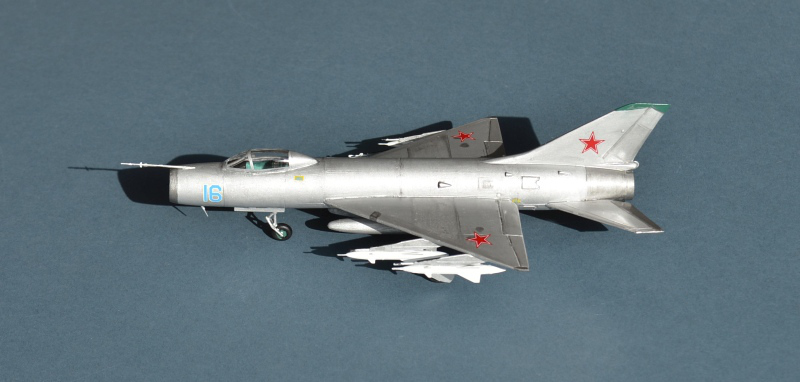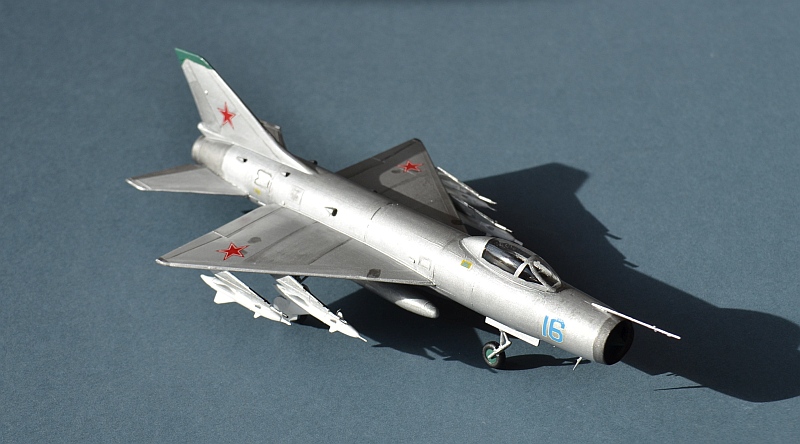March 2019
Sukhoi Su-
Sukhoi Su-
Soviet Air Defences, 1965.
Leoman 1/72
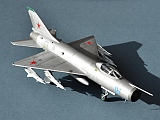
© www.gengriz.co.uk
Have a look at many more of my models of Warsaw Pact aircraft my “Other Side” pages pages
The Su-
In its original form, armament was the Kaliningrad K-
The Su-
There are a number of well known sayings that cover the futility of trying to tidy up something that is fundamentally poor (I’m being deliberately obscure for sake of the easily offended). However, I’ve decided that it’s now time to stop polishing this one. It will never be anything better than it is now!
This was another cheap acquisition from last year’s model swap at Telford. My expectations were pretty low, and have proved well founded, but at least I only paid £5 for it!
Despite the box looking like one of those unnamed generic “fighter jet” Chinese kits you get in cut price stationers, Leoman was in fact trying to be a serious modelling brand in the 1980s/1990s.
Their kits were originally resin, with some injection moulded parts, covering what were, at that time, little known Soviet aircraft. Whilst that may have cut it back then, today’s plethora of superbly researched eastern block Cold War aircraft from European and Chinese manufacturers mean that it is difficult to remember how little real information we had in those days, when even clear photographs were hard to come by. Thank goodness, times have moved on.
Despite some reasonable injection moulding, this kit clearly hails from that era
and looks as though it may have been based on one of the resin offerings to start
with. Think Magna resin without the subtlety of detail or shape and you will be
on the right track. I have very little I can say that is good; shape is vague and
suspect, detail is non-
The very basic decals worked well, but the “bort” numbers seemed much too large to me and I’m not convinced yellow was that common, so mine come from the spares box.
So not recommended in any way, except perhaps like me to try and improve your hand brushed aluminium finishes. Move on………………..
